#fantasistakk
Explore tagged Tumblr posts
Text
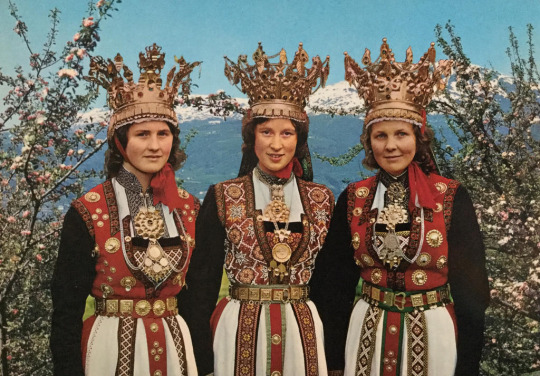
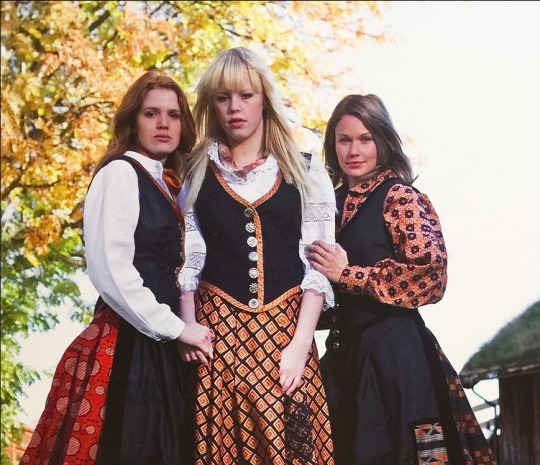
Bunad Basics: the Terminology
What does "bunad" mean? How is it different from a "festdrakt" and what on earth is a "fantasistakk"?
On this blog I use a number of terms that may be confusing if you're not already immersed in the world of historical fashion and traditional Norwegian folk costumes. Since my goal here is to make this world more accessible to anyone who may be interested, I figured I should make a glossary of sorts.
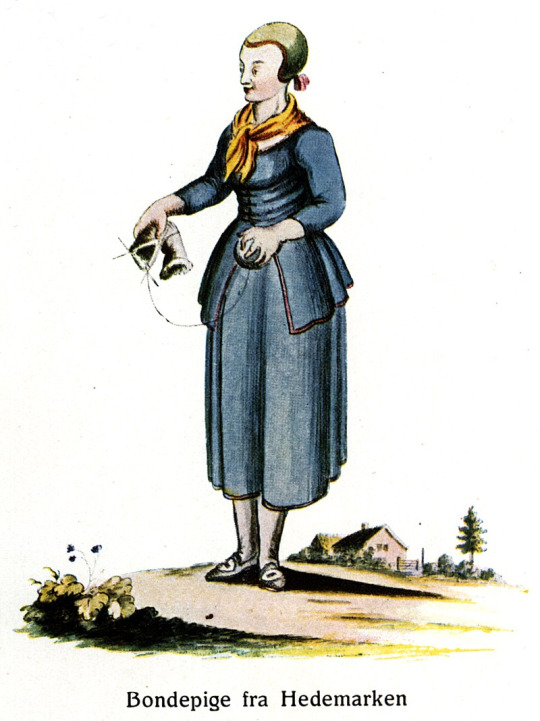

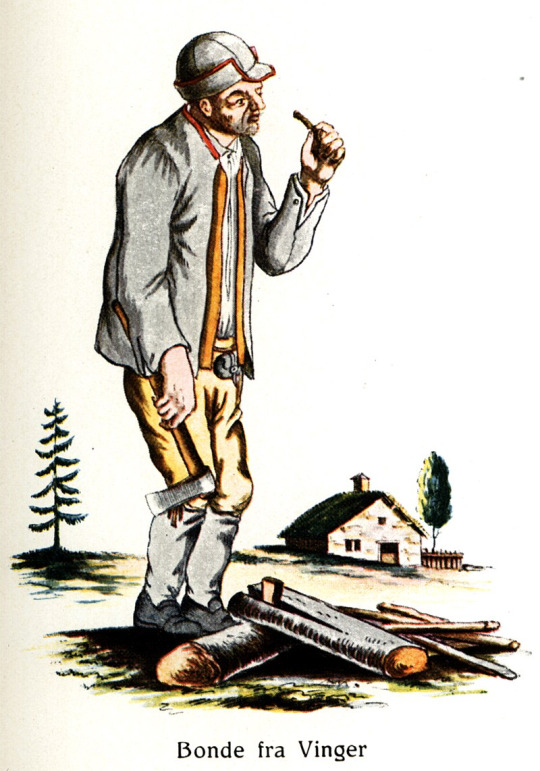
Illustrations by Johan F. L. Dreiers
Folk Costume
This is an umbrella term that refers to any complete costume has been constructed using traditional techniques.
While the word "costume" today has connotations to playing a character in, say, a show -in this context it simply means an outfit.
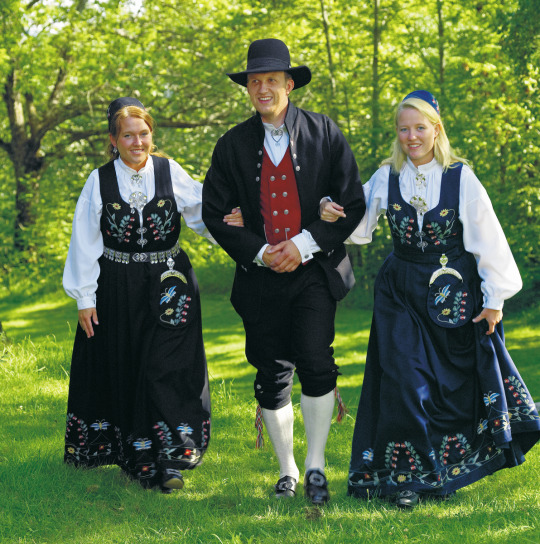
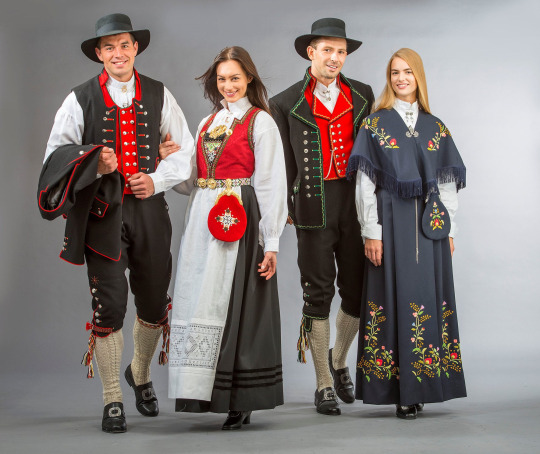
Bunad [bu:`nad]
From old norse: búnaðr. May be directly translated as "to be used at home".
In modern Norwegian the word refers to a type of formal folk costume that represents the traditions of a specific geographical area. The platonic ideal of the bunad is that it should show exactly where you are from, where you consider your "home". Not every adult norwegian has a bunad, but it's common to recieve one from a family member as your 15th birthday gift. You're expected to only own one bunad for the rest of your life (unless you pass it on to the next generation).
There are around 450 distinct bunads in Norway, according to Store Norske Leksikon. While there tends to be a common consensus of what regional traditional costumes are considered real bunads and not, there is no official registry of bunads. The number of 450 is an estimation, and there tends to be disagreements on who is allowed to call their folk costume a bunad.
Some bunads have deep roots and has been in continoous use for hundreds of years, while others are only loosely based on a few archeological finds. The definition is often up for debate.

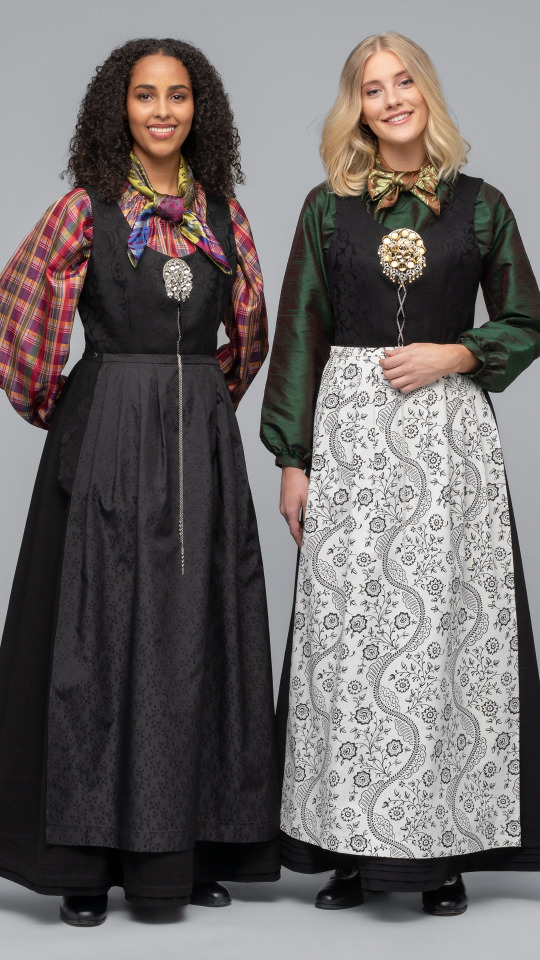
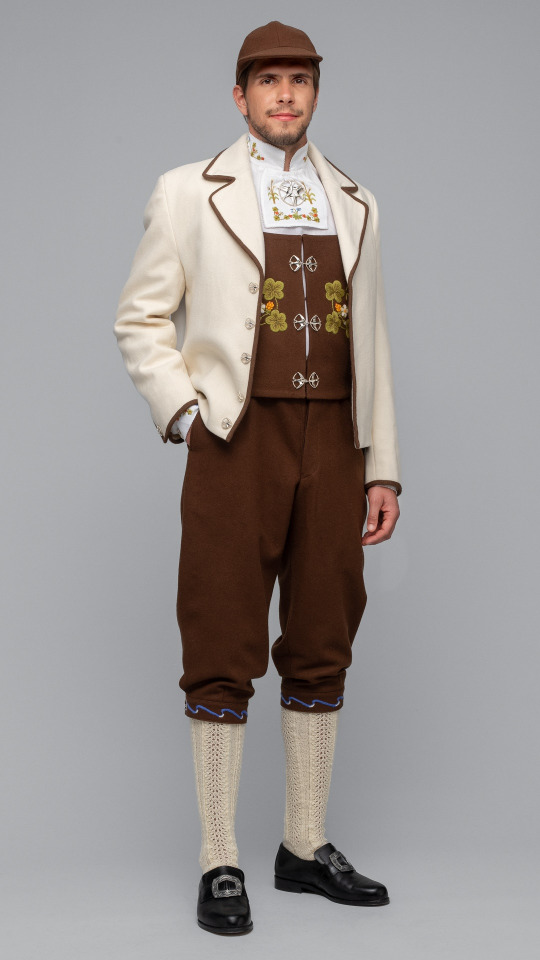
Left to right: Festdrakt originating from Tromsø, Northern Norway, and Senja
Festdrakt
May be directly translated as "celebration-costume".
A festdrakt is a formal traditional outfit that is not considered the absolute represenation of a specific geographical area. It may be inspired by local traditions, but has for some reason not been granted recognition as a real bunad.
If you can trace the composition of a folk costume back to a specific designer, it will most likely be called a festdrakt. Though a few costumes that fill this requirement are commonly considered bunads regardless.
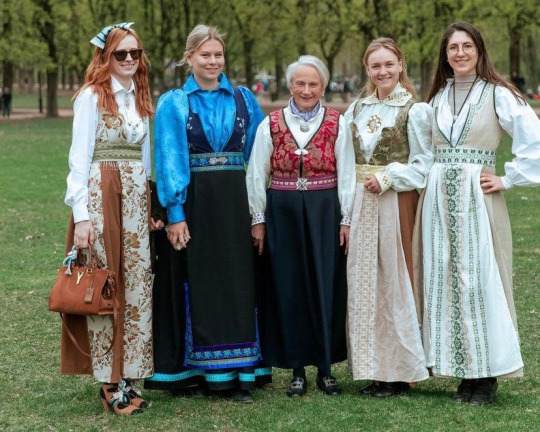
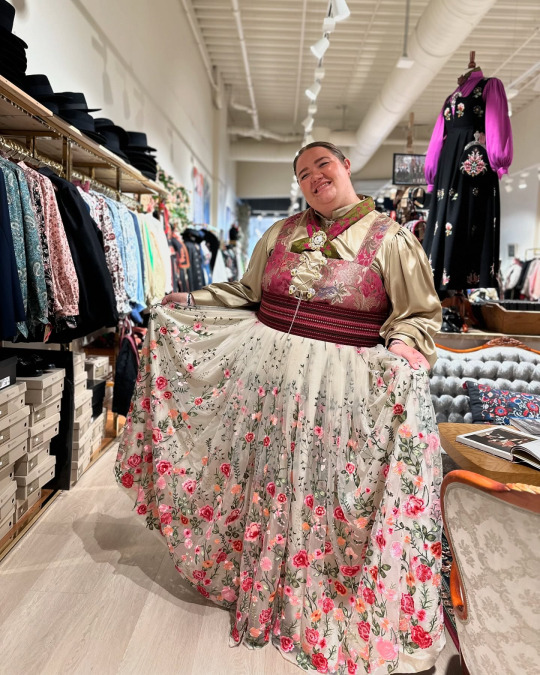
Left: women wearing homemade fantasistakk. Right: woman wearing the fantasistakk "alvedrakt" by fashion house Embla Bunader
Fantasistakk
May be directly translated as "Imagination-dress" or "fantasy-dress".
This is a relatively new term that was born from a modern folk fashion movement. In recent years it has become popular to design a "bunad" from your own imagination, and sew it yourself from any materials you have available.
The motivations behind doing this vary, but a few common reasons are: - wanting to wear something beautiful on important occasions, but not having the money to buy a "real" bunad - feeling overwhelmed about choosing a bunad, so instead going for an option that represents your own personality instead of a specific place of origin - wanting to learn how to sew traditional garments, but being intimidated by the near sacred status of the bunad. - just thinking they look cool
Some fashion houses, like Embla Bunader and Eva Lie have become known for coming up with avant-garde fantasistakk designs.
Bunadspolitiet
Another young term. "The bunad police". This is not an actual authoritarian force, but rather a name for people who feel it's their moral obligation to call out anyone who uses bunad "wrong". Often used as a kind of "boogey man" in discussions about bunad.
These are just a few terms that tend to pop up, if you have any other words you'd like me to explain, ask away!
7 notes
·
View notes
Note
Heya! Sorry for the random message but I was looking through the bunad tags on tumblr and saw your post on fantastistakk? (I hope I’m spelling that right!!) i was wondering if you had any good resources on learning more about them or could share any more information on them! I’ve always loved norwegian bunads and I’d like to depict them + reference them more in art/writing but with further fantasy themes (hence the even greater fascination with fantastistakk) and have worried about coming across as ignorant when the last thing I want to do is do these wonderful dresses and their history a disservice! (I additionally ask just because when I look up fantastistakk specifically I get a lot of results in norwegian which is fine I just don’t want to end up with inaccurate info putting it through a rough translator online so i thought I’d ask!)
Thank you so much!
Hi and thanks for the ask! Please don't apologize I love talking bunad and fantasistakk :D
I really wish I could paste in a link to the Definitive Guide to Fantasistakk (English Edition), but unfortunately no such thing exists.
Mainly because this is what I would call a Folk Fashion Movement, in the sense that there is no big fashion house or designer* behind it, it consists of regular people digging up their mothers' sewing machines and having fun with learning traditional techniques in a new way. The closest thing you can get to valuable literary resources would be people's personal blog posts and the occasional news article, but they're all written in Norwegian, like you discovered. And while I get that machine translation can be awful, it wouldn't be the end of the world if you used it to research this topic, since most of the time the explaination of a fantasistakk essentially boils down to "I made it like this because I think it looks cool". (*there are a couple of notable fashion houses that do fantasi-stakk, like Eva Lie and Embla Bunader, and while they contribute to the trend, they don't control or own the movement.)
There are several ideals tied to the fantasi-stakk trend, so the reason someone might choose a fantasistakk instead of a bunad can vary. Some people make theirs from thrifted curtains because they're saving up for a "proper" bunad later, while others commision a carefully researched and deeply personal subversive tailor made piece of art based on their local dress tradition. In any case, the fantasistakk wouldn't exist without the traditional bunads, so you might want to look into those as well.
Luckily, you can find a lot of international resources on the traditional bunads, because they've been around for longer and one of the core ideas behind the bunad-movement was to document local dress traditions to prevent them from fading into obscurity. If you want to learn about the history of bunads I highly recommend this video by Kristine Vike, that takes a critical look at the idea of the Bunad. It really digs into the historical and political context that the bunad has and the history of how it evolved into what we know it as today.
youtube
I cannot overstate how well researched this video is, and also if you want to learn more about Norwegian dress history and textile arts in general, go check out her channel, it's a real gold mine.
But if you want resources for art inspiration, I'd encourage you to look up specific bunads to base your fantasistakk on. Each bunad has its roots in a geographical area and is made with the traditional techniques unique to that place. Some areas have more variety than others, but there's enough to write several books on each and every bunad.
Here's a handy list of pretty much every bunad (with a few Sami gakti as well), sorted by province:
Very few of the costumes in this list have English wikipedia articles attatched, but some of them have Norwegian articles, and I'm sure every single one of them has plenty of pictures to use for reference (pro tip: instagram hashtags. people love to tag their bunad pics with the name of their dress). And if you find one you're interested in, but you can't find any accessible information, I'd be happy to help you learn more about it :D
when it comes to being respectful and coming up with fantasistakk-designs, I'd say try not to worry too much about it, and just have fun! some people get mad when they see a teenager using a "non-traditional" shirt with their family heirloom vest, while others applaud them for showing both their heritage and their individuality. Doing your research is important if you want to depict historical dresses (and to give you more ideas of what a bunad can look like), but in contemporary norwegian culture a lot of us are mixing it up with modern garments and borrowing from other cultures and just making clothes we want to wear (just like our ancestors used to do before the standardized national costumes got popularized)
And on that note, I'll wrap this up with the banner picture from Embla Bunader's home page for inspiration:
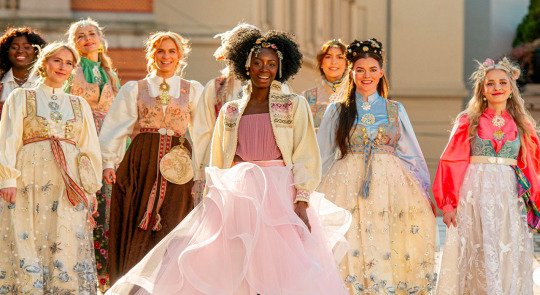
(btw I'm officially rescinding the statement I made in the fantasistakk post, that Embla is "less extravagant", cause this past year they've Really been Cooking)
I wasn't really sure where to even begin answering this ask, since it's such a massive topic, but I hope I at least some of this information is useful :P
#vitpost#bunad#fantasistakk#Maybe later I'll do a breakdown of popular fantasistakk silhouettes and what regional tradition they're inspired by?
5 notes
·
View notes
Note
As a norwegian who also adores older styles of clothes, I think it's so cool to see people from other countries love and appreciate them too! And your art is SO CUTE!!
If you are interested in Norwegian costumes we call ours bunad, and the more modern, not regulated versions people make for themselves is called fantastistakk, which uses traditional shapes and patterns, but with fabrics people have at home (or you can pay a lot and have someone make one for you, like Eva Lie Design, check her out her designs are gorgeous 😭).
Our "official" bunads are regional and have standards like which fabrics, which colours, which jewelry and which accessories they can have, the fantasistakks are very open and you can make them with whatever fabrics, colours and accessories you want.
The Bunad! I actually plan on drawing Norwegian dress next actually! It’s on my list for a long time. It was one of the cutest dresses i saw and i love each variants of them . The nordic as a whole have so many beautiful dresses I want more people to see them too! And thank you so much for helpful tips, I will be sure to use these on my research. I won’t disappoint you I promise<3
18 notes
·
View notes
Photo


Fantasistakk by Eva Lie Design, with sølje from Huldresølv
5 notes
·
View notes
Photo

Eva Lie Design - FANTASISTAKKER
Fantasy versions of Norwegian folk dress based on the popular modern regional beltestakk folk costume.
10 notes
·
View notes
Photo

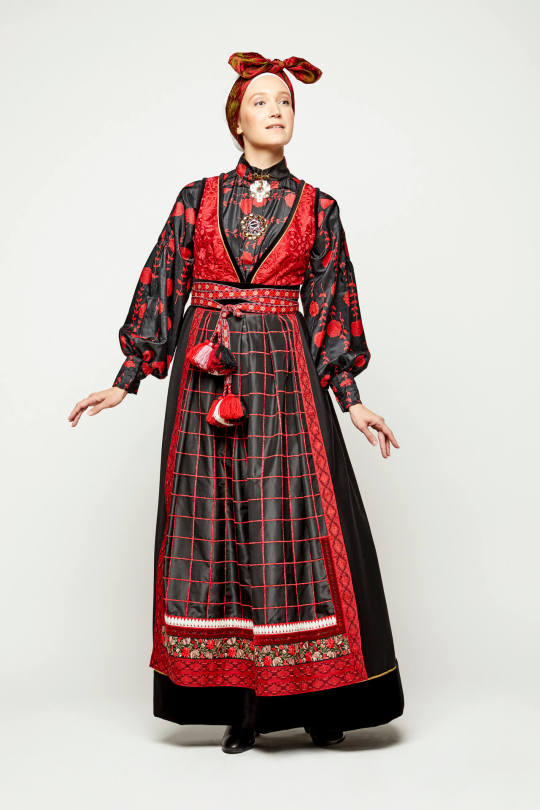
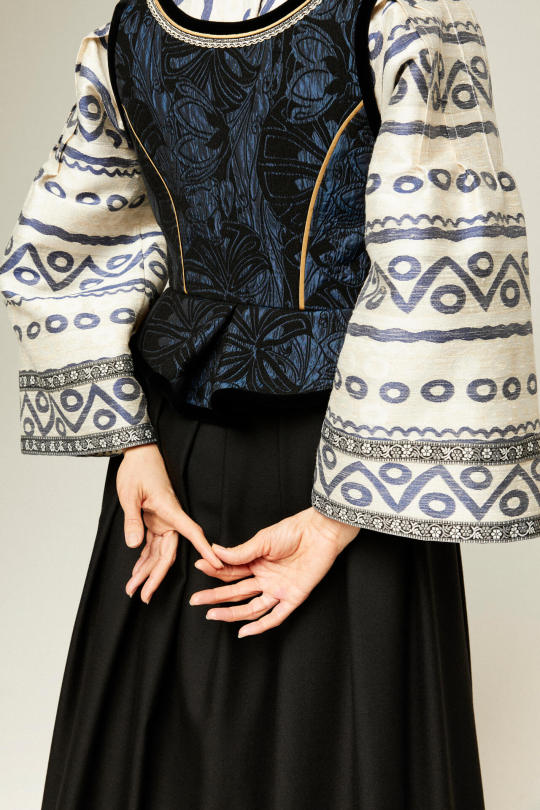

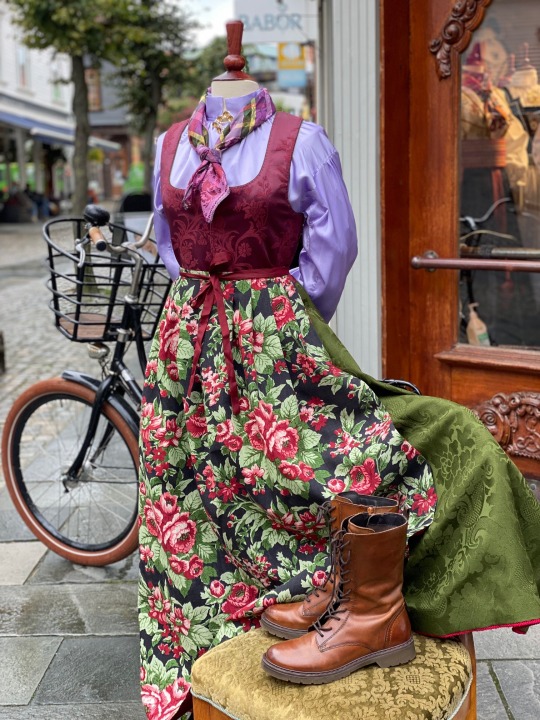

I’m supposed to be working but I have Bunad Brain so I can’t stop thinking about my favorite modern trend: the Fantasistakk (Fantasy Dress) in which you do literally whatever you want with the materials and traditional techniques you have at hand, condemning all regional convensions put in place in the early 1900′s, and make a dress your peasant ancestors probably would have offered their first born to the Hulder for. It’s so good.
Most of these are from Eva Lie Design except for no. 4 & 5 that are by Embla Bunader
the ones by Eva Lie are designer and known for pushing the boundaries, while Embla is more affordable and less extravagant. Though some of the coolest examples of Fantasistakk I’ve seen have been the ones people design and sew themselves, that I’ve just happened to see on the street, and it’s just so good I love this trend I hope it never dies
#vitpost#bunad#eva lie design#fantasistakk#norway#norwegian#fashion#I really like!! for the bunad to be evolving and not Stuck in Time#I don't like thinking of it as historical wear I think it should represent us as people as we are now.#I don't want to dress like I'm proud of what this nation was doing around the turn of the century I wanna dress like Myself y'know?#my dress was controversially modern when I got it but since then the fantasistakk has really taken off and I wanna join in on the fun#I'm gonna add Trousers to mine. see what happens
308 notes
·
View notes
Photo
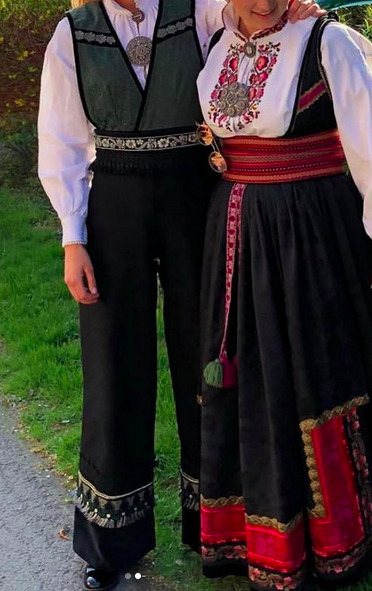

Theydies and Gentlemen: we have finally located
the ✨Fantasidrakt✨
(masc. version of the fantasistakk)
image sources: x x
#bunad#fantasistakk#vitpost#norway#norwegian#traditional costume#(not really this is like. Subversion. it's Innovation. but still. traditional techniques)
15 notes
·
View notes
Photo


3 notes
·
View notes
Text
I made this side blog to fully nerd out about Norwegian Folk Fashion, if you liked my bunad and fantasistakk posts, this might be up your alley :3








Bucket Hats by Embla Bunader
Made with traditional wool textiles from Gudbrandsdalen (Norway), the cut of the hat is a modern design.
#bunad#I fully intend to go all out on this blog btw.#I will 100% go full 'Looks of [insert city]' on this bitch when constitution day rolls around
7 notes
·
View notes